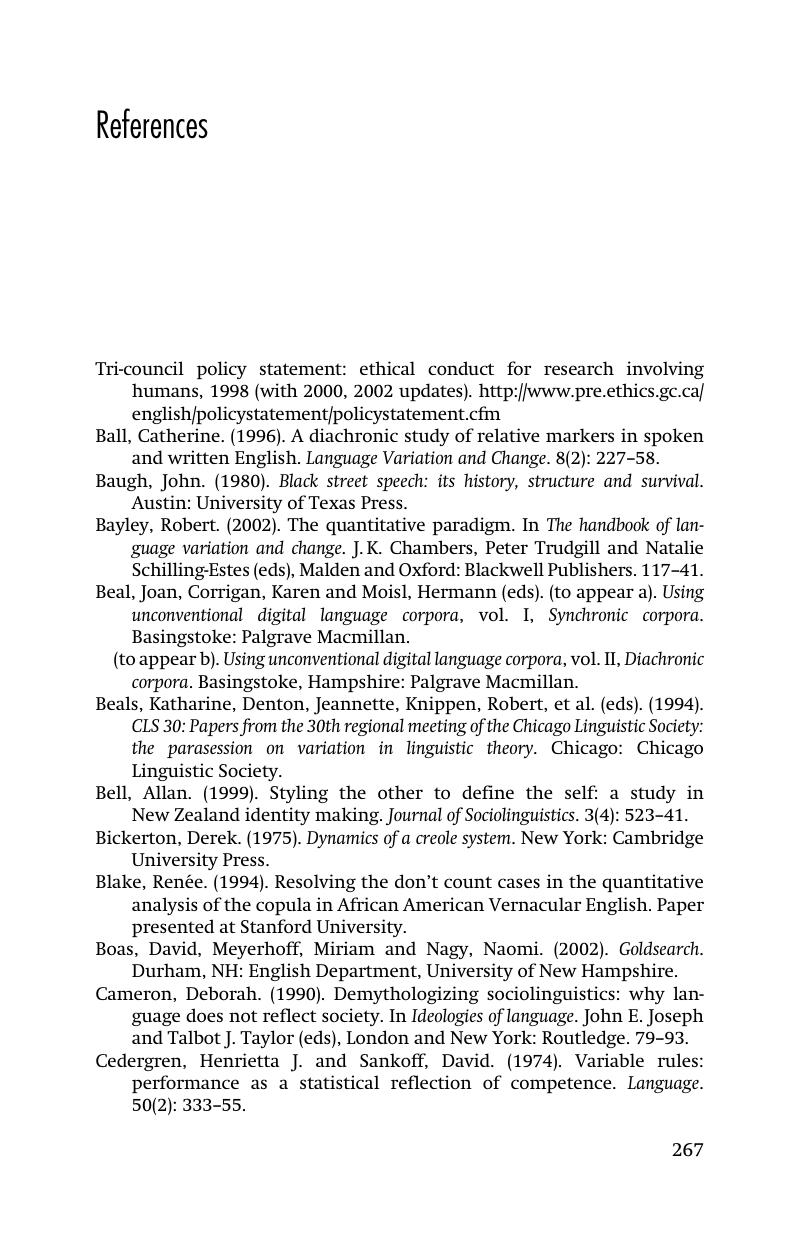Book contents
- Frontmatter
- Contents
- Preface
- Notes on codes and abbreviations
- 1 Introduction
- 2 Data collection
- 3 The sociolinguistic interview
- 4 Data, data and more data
- 5 The linguistic variable
- 6 Formulating hypotheses/operationalising claims
- 7 The variable rule program: theory and practice
- 8 The how-to's of a variationist analysis
- 9 Distributional analysis
- 10 Multivariate analysis
- 11 Interpreting your results
- 12 Finding the story
- Glossary of terms
- References
- Index
- References
References
Published online by Cambridge University Press: 05 June 2012
- Frontmatter
- Contents
- Preface
- Notes on codes and abbreviations
- 1 Introduction
- 2 Data collection
- 3 The sociolinguistic interview
- 4 Data, data and more data
- 5 The linguistic variable
- 6 Formulating hypotheses/operationalising claims
- 7 The variable rule program: theory and practice
- 8 The how-to's of a variationist analysis
- 9 Distributional analysis
- 10 Multivariate analysis
- 11 Interpreting your results
- 12 Finding the story
- Glossary of terms
- References
- Index
- References
Summary

- Type
- Chapter
- Information
- Analysing Sociolinguistic Variation , pp. 267 - 276Publisher: Cambridge University PressPrint publication year: 2006



